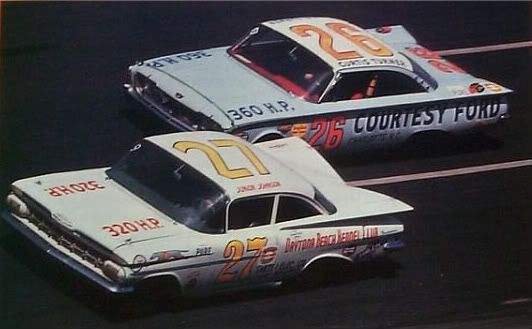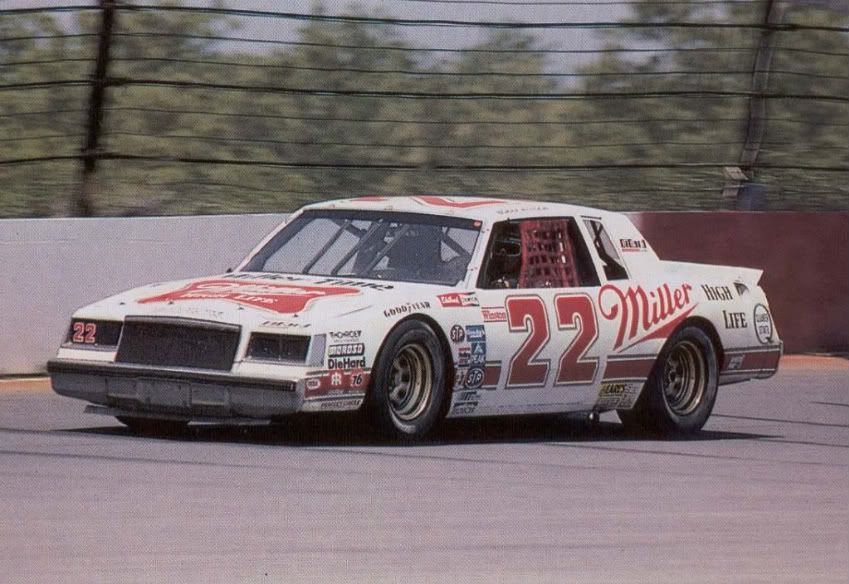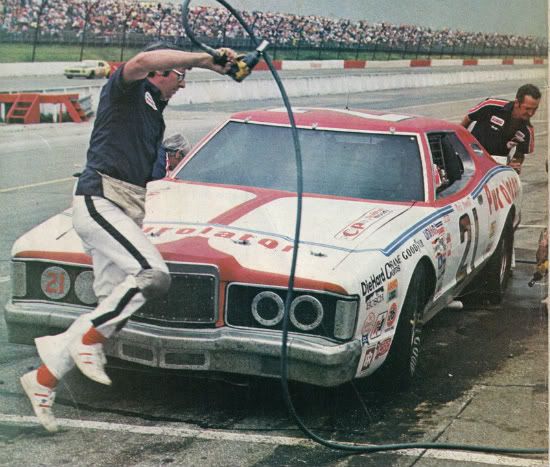For many years people of this small town in North Carolina went about their business working farms, raising families and keeping the home fires burning . Sixty years ago the quite solitude of this beautiful countryside would become a little faster paced and a little more noisy. A twelve year old boy was there to experience this change of scenery drinking it all in like a cold Coca a Cola on a hot day.
The sound of an engine at full song was music to his ears and feeling the steering wheel was as comfortable as wearing his Cowboy boots. Many years of winning and defeat, crashing, hard hits and many broken bones have taken a toll on his body but the spirit is still there. In this arena his legend will never be equaled. In this mans realm we have learned what his legacy is.
Richard Lee Petty was born July, 2nd 1937 in Randleman North Carolina. No one knew what was to come but if stars do align creating magic, Richard Petty surely is a magician. So very rare is it to have the torch passed from a blood line to make it burn even brighter and cary the torch through. Richard carried this flame to become a King.
Achieving royal status for Richard was not really about taking checkered flags but about him as a person. Being humble and good natured would soon pay huge dividends. Richard's father Lee also reached the heights of stardom but Lee's way of doing things was not just to give away the throne to his son as an heir. Richard had to earn the mantle with hard work and experience. Richard asked his father to let him drive before the age of 21 but Lee flatly refused telling his son that he needed to mature before driving a race car. Lee Petty's lessons to his son would prove to be unbelievably successful.Soon enough we would see a Royal Flush.
Early in Petty's career he thought to have won a short track race but the finish was protested by of all people, his father. The finish was overturned giving the win to Lee. When Richard questioned his father about this turn of events Lee stated, "We made more money by me winning this race".Lee Petty finally turned the reigns over to Richard shortly after being seriously injured at Daytona in 1960. At Daytona for Speedweek this year it looked as if the Petty's were more into acrobatics than driving on the track as both Lee and Richard flew over the third and fourth turn gaurd rails during seperate qualifying races. Lee was nearly killed and was bed ridden for several months. Richard was much more fortunate suffering only a sprained ankle. Neither competed in the 1961 Daytona 500
Richard learned his lessons well and became a regular winner in the Grand National circuit finishing 2nd to Joe Weatherly for the title during the 1962 and 1963 seasons while racking up 27 victories. 1964 would be a historical and tragic year for racing as Richard began his methodical climb to the top of the mountain.
This year was significant for many reasons. The automobile manufactures had a keen eye on what was happening at Daytona knowing that a win here would result in brand new cars flying out of show rooms across the country. Bigger and stronger engines were needed to accomplish this goal and Chrysler broke through with the introduction of the HEMI engine. Richard Petty was more than happy to bolt in this beast of an engine and let it rip.
Chrysler worked hard to build the HEMI into race trim while not letting the cat out of the bag. The engines arrived at Daytona in a cloud of secrecy as the Plymouth and Dodge race teams installed these monster engines. Once on the race track the Hemi powered cars sand bagged for fear of Ford or Chevy crying foul. Even with the Dodge and Plymouth powered cars not using all of their butterflies they still started up front with the other camps pointing fingers knowing that the jig was up.
For Richard Petty it was time to be a part of history.
Once Richard put his Plymouth on the race track two things happened. The HEMI developed a coolant leak and the car would not turn through Daytona's steep banks. Petty and his crew discovered that the HEMI had a defect in one of the block decks. Petty welded up the deck himself and they were in business. The car not turning would be a difficult nut to crack as his crew chief Dale Inman threw everything at the car to fix it. They finally realised that Richard was sliding out of his seat driving through Daytona's steep banks at speeds never seen before ! Inman took a 2X4 wrapped in a towell and bolted it to the right side of Richard's seat.
When the race started it the rules could not be changed as Nascar was powerless to reign in the HEMI engine. Richard could now drive the car and pour all the gas into his high powered Plymouth. Petty obliterated the competition winning by over one lap. At one point late in the race coming into the pits just to ask his father how he was doing or rather decrease his huge lead.
The 1964 Daytona 500 to this day is considered the greatest field ever for this race having six current or future Nascar champions, nine current or future Daytona 500 winners, three Indianapolis 500 winners and two drivers with Formula One experience. Sadly five drivers who competed in this event would lose their lives before the year was over. Richard Petty would go on to power his way to the championship in 1964 but his title was tempered by the loss two very good friends in Joe Weatherly and Glen "Fireball" Roberts.
Richard Petty's climb was about to get very steep.
to be continued



